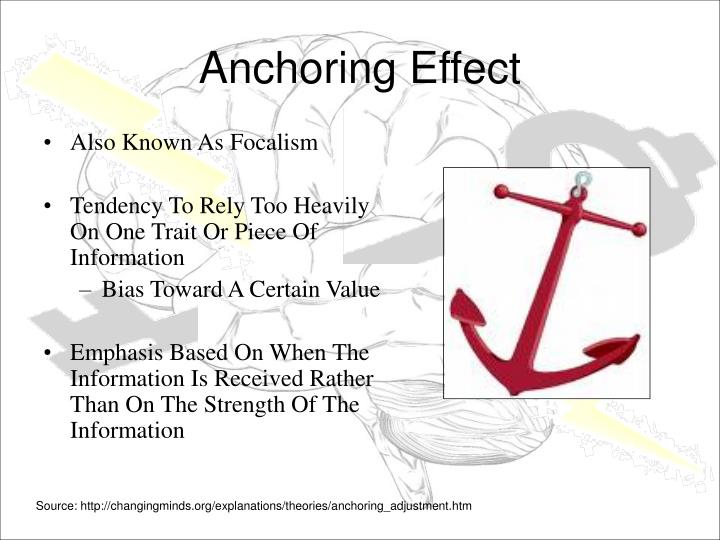

Use of this knowledge can be advantageous. This, and many other anchoring studies seem to show that people lack preexisting subjective probability distributions over unknown quantities. Evidently, these subjects did not have, or were unable to retrieve personal values for ordinary products, and the values they provided were anchored to their social security number which is essentially a random figure. For example, subjects with social security numbers in the top 20% were willing to pay $56 on average for a cordless computer keyboard, compared with $16 on average for subjects with the bottom 20% of social security numbers. More than that, the valuations of subjects with the top 20% of social security numbers were typically greater by a factor of three.

The results showed that those with high numbers were willing to pay more for the products. Of course, overall price, the amount we are accustomed to spend on in-app purchases, and other factors might also be in play when people decide what to purchase. It would make 115 gems be the most popular purchase indeed. So why not anchor 250 gems? Well, if they had only 3 bundles, I’d recommend anchoring 250 gems. If the clever people at MoonActive wouldn’t outline and emphasize 115 gems as the “most popular” deal, they might have been seeing many more purchases on the lowest deal – 20 gems. If they felt the amount asked for 115 gems was too much, they adjusted downward, but mostly 1 tier down, to 55 gems.

Most players would see the anchor as a starting point for their inner-negotiations ( I NEED LOTS OF GEMS vs. If you guessed 2 and 3 (55 gems with 10% more, and 115 gems with 15% more) you were right. If you had to guess which deals were the most bought ones, what would you guess? However, the game anchors the player/potential buyer to the 3rd alternative – 115 gems, 15% more for the same price. When offering Gems, Wonderball Heroes suggests 6 different deals or bundles (I’ll be discussing in a future post the disadvantages of offering too many options). After giving a yes/no response, subjects were asked to state the most they would pay (given an incentive that is known to produce truth saying in such experiments). In a modern demonstration of anchoring, Dan Ariely, George Loewenstein and Drazen Prelec offered to sell various valuable consumer products (computer accessories, wine bottles, luxury chocolates, and books) to MBA students who were asked whether they would buy each good for a dollar figure equal to the last two digits of their social security number. Estimates were 25% and 45%, respectively, which are obviously related to the number spun on the wheel (the “anchor”), even though subjects could clearly see that the number had been generated by a purely chance process. Then they instructed subjects to estimate the actual figure.

In their famous experiment they spun a wheel of fortune with numbers ranging from 0 to 100, that was actually rigged to stop on 10 or 65 only, and asked subjects if the percentage of African nations in the United Nations was greater than or less than that number (10 or 65). Adjustments to the starting point are typically insufficient, meaning that different starting points yield different estimates, which are biased towards the initial values. Tversky and Kahneman first described this phenomena as situations in which people make estimates by starting from an initial value which is then adjusted to yield the final answer.


 0 kommentar(er)
0 kommentar(er)
